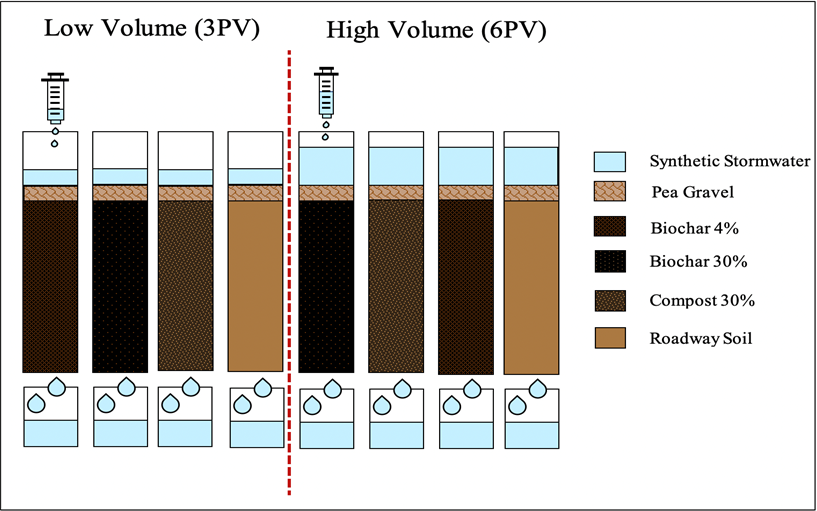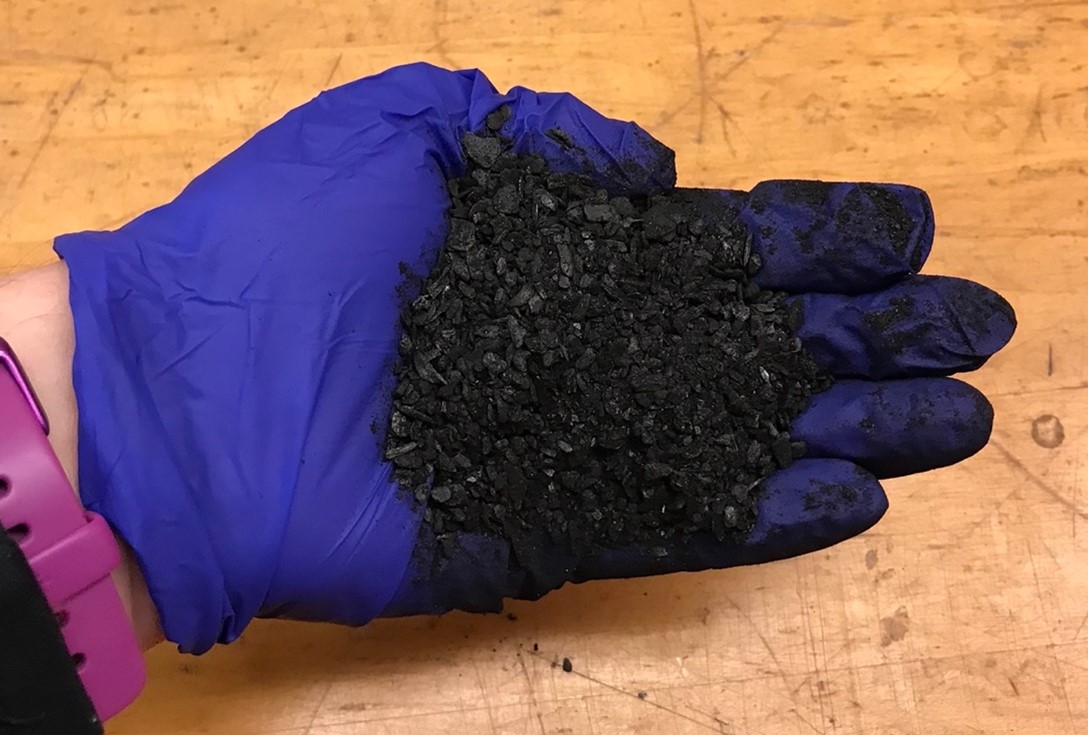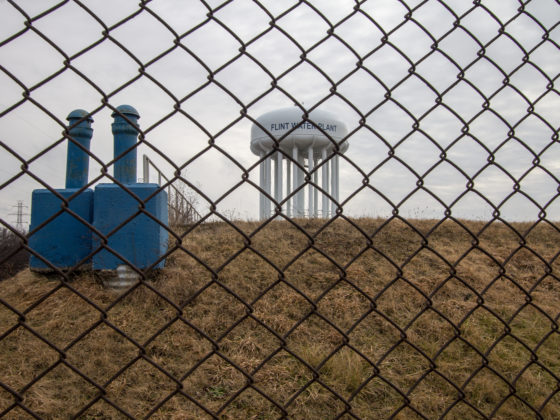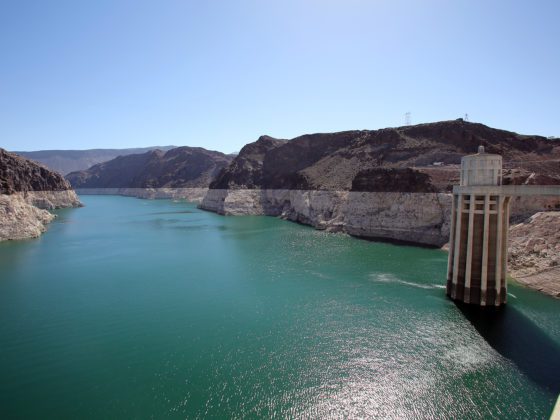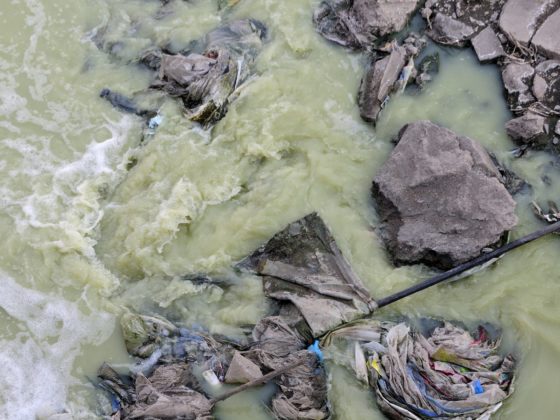The Global Water Initiative held the fourth annual UVA Graduate Water Research Symposium on Nov 17, 2021. Again in modified social distancing format, ten graduate students presented their work. This year Maria Rossetti, a civil engineering doctoral student, gave the top presentation: “Assessing the impact of storm volume on nitrogen transport in biochar-amended soils for stormwater runoff management.” An honorable mention goes to Prakrut Kansara who presented “An Assessment of the Filling Process of the Grand Ethiopian Renaissance Dam and Its Impact on the Downstream Countries.” We talked with this year’s winner.
Your work looks at “amending” natural soils. Can you explain why soil might need amendment?
Stormwater runoff is a concern for quantity and quality. Excess volumes and velocities can cause flooding and erosion. The moving water carries pollutants like sediments and nutrients into our streams and lakes. Typically, stormwater managers use best management practices (BMPs) to reduce stormwater impacts. Unfortunately, these common approaches may not be effective with respect to nutrient management, and structural BMPs can be quite costly. Soil is naturally a mixture of materials: minerals, organic matter, moisture, and air. By mixing in a new material, we can change the properties of soil relevant to stormwater and hopefully reduce the negative impacts of stormwater runoff, and a soil amendment strategy is typically much less expensive than a structural BMP.
What are some of the problems with the current state of practice in soil amendment for stormwater management?
Current practice is to use compost as a soil amendment. Soil amendments are typically used near the edges of impervious surfaces like buildings and roadways. Compost amendments are largely used for hydrologic improvements. That is, as large amounts of water flow off of the impervious surface, we want the runoff to infiltrate quickly into the ground. Compost amendment improves infiltration rate. Compost amendments are also used where land has been disturbed, such as during construction or from erosion, because amendments can help encourage revegetation. Healthy coverage of plants is critical in controlling erosion. But compost can leach high amounts of nutrients. Thus, while compost amendment helps with the water quantity management, it works against our water quality goal by creating nutrient pollution.
What is biochar and why are you interested in it as a potential alternative soil amendment?
Biochar is a highly porous charcoal-like material produced through pyrolysis, which is heating an organic material to a high temperature under low oxygen conditions. (See Figure above) As I noted, in stormwater management, we have two fundamental types of goals: quantity and quality management. Like compost, biochar has been demonstrated to help infiltration (so that’s good for the quantity goal), but unlike compost, biochar has some properties that can retain nitrogen, so hopefully biochar would contribute less nitrogen than the current amendment practices. Like compost, biochar is also believed to help with revegetation. Thus, it is hoped that it can provide similar benefits to current practice without the negative impacts of the current practice (compost) which adds significant nutrients to our waterways.
Biochar also has other potential sustainability benefits. Biochar may slow carbon cycling as a means of carbon sequestration into soils. It has been considered a negative carbon emissions approach. It is stable. It is also a sustainable product that can be produced from forestry residues and other biosolids.
Your study compared the performance of biochar and compost as soil amendments in the laboratory. Can you describe your experimental set-up?
To compare the performance, we conducted a laboratory-scale column study. I built 8 soil columns from clear PVC pipes and created four different soil mixtures (See below). Each type of soil mixture was packed into two columns. One mixture type was simply pure roadway soil (that is, natural unamended soil). Two mixtures were roadway soil amended with 4% biochar by mass and another was roadway soil amended with 30% compost by volume. These two mixtures are what has been recommended for each type of amendment. The fourth mixture (roadway soil with 30% biochar by volume) was to give a direct comparison to the compost mixture ratio. To simulate stormwater runoff percolating through roadway soil, I then added synthetic stormwater to the top of the soil columns and collected the water that drained out of the column. The synthetic stormwater had both nitrogen and phosphorus as typical nutrient pollutants. I also tested the impact of different size storm events. We expect with climate change large storms will occur more often and it is important to anticipate how soil amendments as a BMP will perform under future climate conditions with larger storms. Once I had collected the effluent from different types of soils and different size storms, I analyzed the total dissolved nitrogen concentrations of the resulting effluent.
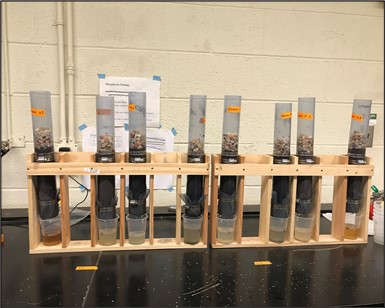
What were the key results of your experiments?
The key finding for both storm sizes is that the effluent from soil columns amended with compost had the highest nitrogen concentrations. For all storm events, biochar-amended soils produced effluent with nitrogen concentrations that were similar to or less than the effluent from the unamended soil. While biochar didn’t seem to reduce nitrogen export as compared to natural soil, it was not contributing excess nutrients. Since biochar will provide hydrological benefits expected of a soil amendment, this research demonstrates the exciting potential of biochar amendments as compared to the commonly used compost amendment.
What other aspects of soil amendments will you be exploring?
After applying road salts in winter, extremely high concentration of salts can be found in roadway runoff. This salt pollution not only negatively impacts ecosystems, it may also impact stormwater management practices, including soil amendments in roadside soils. Thus, I am planning additional experiments where some of the synthetic stormwater will include high salt concentration. In addition, I will study the impact of different soil drainage rates, which may significantly impact chemical dynamics. Since in the field, soil amendments are added by rototilling them into the upper soil layers, the rate that water can move through the amended soils may be controlled by the flow rates through the low-lying soils. I will modify my soil column experiments to simulate situations where the soil columns drain at different rates.
What do you see as the future for biochar amendments for stormwater management?
I am really hopeful that we will see a move away from compost for other amendments that don’t add to nutrient pollution. Biochar has a lot of potential as a replacement.
We still need additional research to see how biochar performs with other common stormwater pollutants, like oil and grease, and to demonstrate performance in field-scale studies. Life-cycle analysis should also be completed to be sure that a transition to biochar-based systems won’t have unintended consequences somewhere along the production, distribution, and use chain. It will take some time to get approvals from regulators and acceptance from stakeholders. But the change has already begun. Biochar is being distributed from major online marketers and hardware stores, and some producers are targeting storm water applications.
